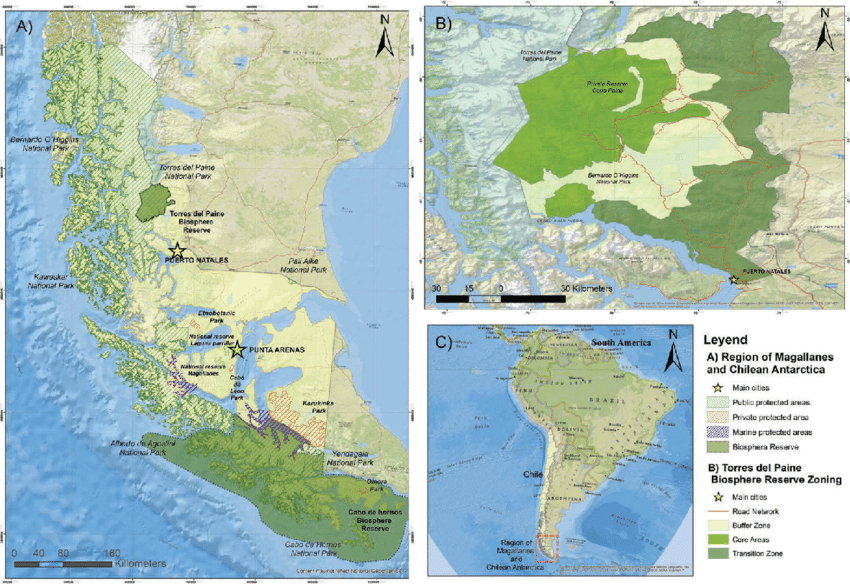RIO DE JANEIRO, BRAZIL – The second wave strain affecting the southern Chilean region of Magallanes would be a “very rare in the world” variant of the coronavirus, according to local experts.
Marcelo Navarrete, the researcher in charge of the study of a possible mutation of the virus in the area, stated: “What is happening in Magallanes is a very high level of contagion, it is as if in the Metropolitan region we had eight or ten thousand cases,” said the Undersecretary of Healthcare Networks, Arturo Zuñiga.

A few days ago, the health authorities raised the possibility that the virus affecting the people of Magallanes is a new strain or a mutation of the virus.
“It is being evaluated, and it is a study that is being done in Magallanes, if there is any mutation in the virus, if it is a new virus, if it is the same virus, if this was a reintroduction; there are a series of measures that are being evaluating to see what is happening in Magallanes,” said the Undersecretary of Health, Paula Daza.
Doctor Marcelo Navarrete, coordinator of the Teaching Research Center Laboratory of the University of Magallanes is in charge of the ongoing research. He acknowledged that “what is happening in Magallanes is that in this second wave of the outbreak, a variant (of the virus strain) appears which is very rare in the world and which is in most of the second wave samples in the region, and this could indicate some advantage of this variant.”
He said that “it has a potential functional impact, so it is possible that it has some effect. For now, it is simply this, we know that there is a variant that is very rare in the world and that appears here very frequently and that coexists in time and space with this second wave that has some different epidemiological characteristics.”
He explained that “when one follows the evolution of the virus, one sees how the variants associate with each other, and what is observed is that the first wave has a phylogenetic lineage and this second wave is different, they are separated in the virus evolution tree. Therefore, it is very probable that it has a different entry site and later in time in relation to what we saw in March, April and May, because that first variant is likely to become extinct.”
The region was one of the first to experience a peak of the disease, when 50 infections were reported on April 11th. Last week, on September 25th, 282 new cases were confirmed. And the outbreak is not subsiding: On Thursday, 132 infections were reported and a positive rate of 33 percent.
The opinion of epidemiologist Gabriel Cavada from the University of Chile is different; he believes that the progression of the virus over the past ten weeks is the result of a “great wave” of infections. According to La Tercera, between April and May, “we can say that there was a relatively low number of cases”.
The report rules out an outbreak in Magallanes, pointing out that by July 27th, a total of 7,076 cases had been recorded in this wave, that is, 82 percent of the total 8,646 confirmed infections in the area.
“Up to July 27th, since March, there was a growth of the epidemic and a plateau. What definitely occurred there, more than a relaxation of the sanitary measures, was an annulment of those measures,” said Cavada.
He added that, a week after July 27th, on August 3rd, there was already an effective R -that is, how many people are infected in one case- which pointed to an outbreak in full development.
“There were 48 new infections with an effective R of 3.6, that is, about four people were infected in each case. That is where this outbreak is identified. The first so-called wave was an indication of a wave, the big wave is now,” he said.
On the other hand, María Teresa Valenzuela, epidemiologist of the Covid-19 Advisory Council, supported the notion of a second wave, pointing out that the cases in April were more serious “and now they are more stable.”
Claudio Castillo, an academic from the University of Santiago, has a different opinion. He explained that Magallanes “is by far the least impoverished area in the country” and blamed the failures on poor coordination within the local government (health services, Regional Secretariats of Health and municipality) and poor implementation of the testing, traceability and isolation strategy.
The national average stands at a rate of 2,672 cases per 100,000 people, and Magallanes, with 4,758, far exceeds that. This should not be the case, since the geographical and socioeconomic features of Magallanes are such that the outbreak can be contained quickly and effectively, Castillo said.
Source: infobae

